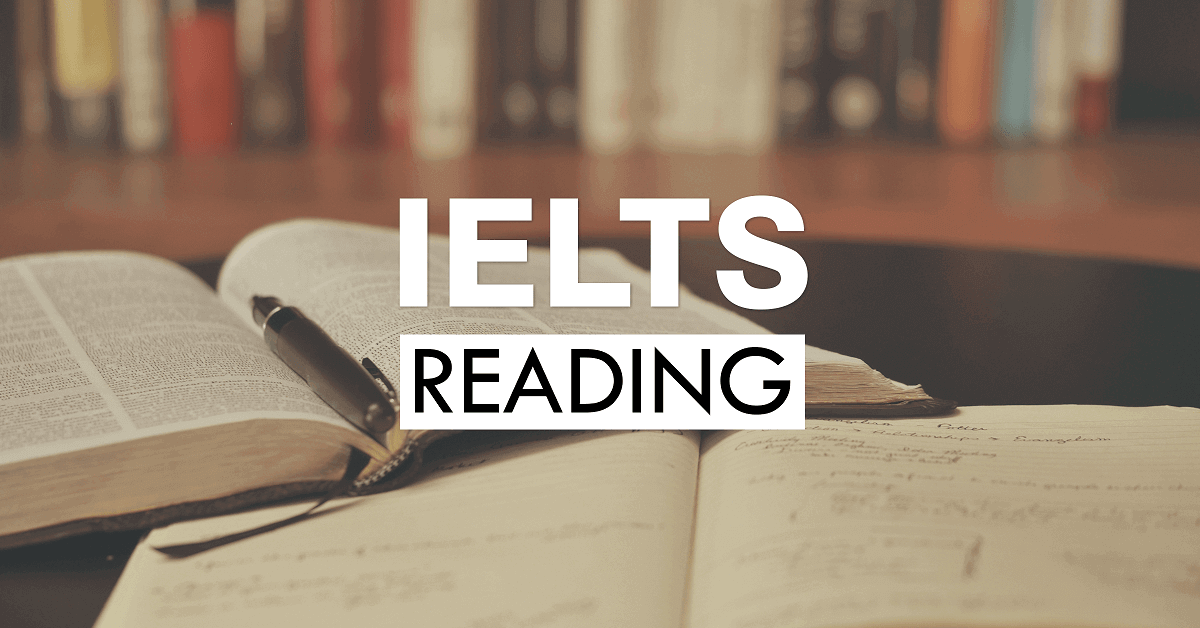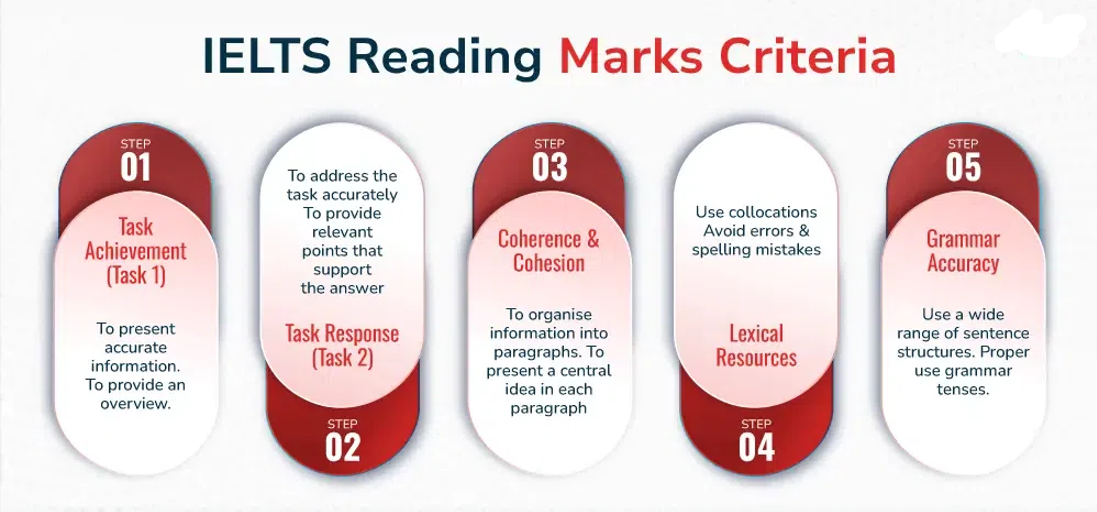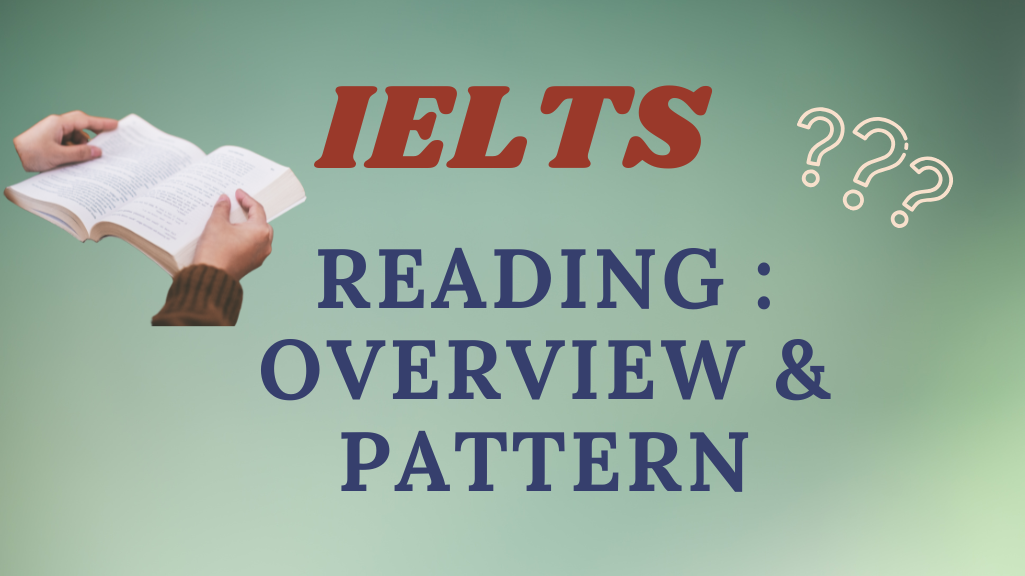The IELTS Reading section is designed to assess your ability to read for gist, detail, inference, and overall understanding. Below is an overview of the structure and pattern, along with key details you should know.
Overview of the IELTS Reading Section
The IELTS Reading section assesses your ability to read, comprehend, and interpret different types of texts under time constraints. It is designed to evaluate how well you can extract relevant information, grasp key ideas, and analyze textual structures efficiently.
Identifying Key Ideas
- One of the primary skills tested is your ability to understand the main idea or gist of a passage. This means quickly recognizing the overall theme without getting lost in unnecessary details. Strong skimming skills help in grasping the general message of a text at a glance.
Finding Specific Details
- Not all questions require a broad understanding—some demand precision. You must locate and extract specific facts, names, numbers, or dates from the passage. Practicing scanning techniques will help you spot these details without reading the entire passage word for word.
Inferring Meaning Beyond Words
- The test isn’t just about direct answers. Some questions require you to read between the lines and infer hidden meanings, author’s tone, or implied ideas. Recognizing subtle cues within a text will improve your ability to tackle inference-based questions.
Analyzing Text Structure
- Understanding how a text is organized can be a game-changer. Recognizing patterns—such as cause and effect, problem-solution, or chronological order—helps you predict where key information is likely to appear. This allows for smarter navigation through passages, saving valuable time.

Exam Variants: Academic vs. General Training
Academic Reading
- Texts: Comprises three long passages taken from books, journals, magazines, or newspapers.
- Content: The passages are factual and may include academic vocabulary, data in the form of graphs or diagrams, and detailed arguments.
- Purpose: Reflects the kind of reading you might encounter in a higher education setting.
General Training Reading
- Texts: Contains a variety of texts related to everyday life, such as advertisements, official documents, brochures, and workplace materials.
- Sections: Typically divided into three parts:
| Section | Content Type | Description |
|---|---|---|
| Section 1 | Short texts on everyday topics | Includes advertisements, notices, timetables, and basic informational texts commonly found in daily life. |
| Section 2 | Work or social-related texts | Features job descriptions, company policies, workplace guides, and social/community-related documents. |
| Section 3 | A longer, more complex text | Contains a detailed passage similar to academic writing but with a general focus, requiring deeper comprehension. |
- Purpose: Assesses your ability to read and understand texts you are likely to encounter in daily life or the workplace.
Structure and Timing
- Total Duration: 60 minutes to answer 40 questions.
.png)
- Time Allocation: The time includes reading the texts and answering all the questions, so effective time management is crucial. Many candidates recommend:
- Spending around 20 minutes per passage.
- Leaving a few minutes at the end to review answers if possible.
Variety of Question Types
The exam includes several types of questions that test different reading skills:
1. Multiple Choice
- Task: Choose the correct answer from a list of options (A, B, C, or D). Some questions may have more than one correct answer.
- Skill Tested: Understanding specific details, the writer’s opinion, and distinguishing between similar choices.
Example:
Passage Excerpt:
"The Industrial Revolution significantly changed manufacturing by introducing machinery that increased production efficiency."
Question:
What was the main impact of the Industrial Revolution?
A) It reduced the use of machinery.
B) It made production less efficient.
C) It improved manufacturing speed and efficiency. ✅
D) It led to a decline in factories.
2. Matching Headings or Information
- Task: Match a list of headings or specific information to the correct paragraph.
- Skill Tested: Identifying the main idea of a paragraph and recognizing its function within the passage.
Example:
Passage Excerpt:
"Deforestation has long been a concern for environmentalists. The destruction of forests leads to habitat loss, climate change, and a decline in biodiversity."
Question:
Which heading best matches this paragraph?
A) The Benefits of Urbanization
B) Causes of Air Pollution
C) The Consequences of Deforestation ✅
D) Renewable Energy Sources
3. True/False/Not Given or Yes/No/Not Given
- Task: Decide if the statement agrees (True/Yes), disagrees (False/No), or if the information is not present in the passage (Not Given).
- Skill Tested: Critical reading, recognizing explicit vs. implied information, and avoiding assumptions.
Example:
Passage Excerpt:
"Studies show that drinking green tea can boost metabolism, but there is no evidence that it directly causes weight loss."
Question:
Green tea helps people lose weight.
✅ False (The passage states there is no evidence of direct weight loss.)
4. Sentence Completion
- Task: Fill in the blanks with words from the passage.
- Skill Tested: Finding key details and understanding context.
Example:
Passage Excerpt:
"Renewable energy sources such as solar and wind power are becoming more popular due to their sustainability and low environmental impact."
Question:
Renewable energy sources include ______ and ______.
✅ solar and wind power
5. Summary, Note, Table, or Flow-chart Completion
- Task: Fill in missing words or phrases in a summary, table, or diagram based on information from the passage.
- Skill Tested: Condensing information and recognizing logical sequences.
Example:
Passage Excerpt:
"The Eiffel Tower, built in 1889, was originally criticized by artists and architects. Over time, it became one of the most visited landmarks in the world."
Summary Completion Question:
The Eiffel Tower was constructed in ______ and initially faced criticism from ______.
✅ 1889 and artists and architects
6. Short-Answer Questions
- Task: Answer briefly based on specific details from the passage.
- Skill Tested: Extracting factual information quickly and providing concise responses.
Example:
Passage Excerpt:
"Marie Curie discovered two radioactive elements, polonium and radium, which led to advancements in medical treatments."
Question:
Which two elements did Marie Curie discover?
✅ Polonium and Radium
Skills Tested in the Reading Section
The test measures several critical reading skills:
- Skimming: Quickly reading through a text to grasp the main idea. This helps you determine the general theme of a passage.
- Scanning: Looking through the text for specific words or phrases, which is crucial for finding detailed information.
- In-depth Reading: Carefully reading to understand complex arguments, detailed information, and subtle nuances.
- Inference: Drawing logical conclusions based on what is implied rather than explicitly stated.
- Vocabulary Recognition: Understanding both common and academic vocabulary to grasp the text’s meaning.

Strategies for Effective Preparation
Time Management
- Practice Under Timed Conditions: Simulate exam conditions by practicing with real IELTS reading tests to build speed and accuracy.
- Pacing: Aim to spend roughly equal time on each passage, adjusting as needed based on the text’s complexity.
Reading Techniques
- Skimming and Scanning: Work on these techniques by reading a variety of texts (news articles, academic papers, everyday reading materials) and practicing identifying key points quickly.
- Note-Taking: Develop a habit of underlining or jotting down keywords in practice tests. This can help you quickly locate relevant information during the exam.
Familiarization with Question Types
- Practice Different Formats: Use IELTS preparation materials to get comfortable with multiple-choice questions, matching tasks, and completion exercises.
- Understand Common Traps: Many questions are designed to test your attention to detail. Practice identifying subtle differences in wording that might change the meaning of a question.
Vocabulary Building
- Expand Your Lexicon: Engage with a broad range of reading materials to build vocabulary, especially for academic topics. This will help you navigate texts more efficiently.
- Contextual Learning: Learn new words in context to understand how they are used within a sentence or paragraph.
Practice and Review
- Regular Practice Tests: Taking full-length practice tests can help you build stamina and improve your ability to manage time.
- Error Analysis: Review your mistakes to understand why you got a question wrong and identify patterns in your errors.
- Diverse Reading Materials: Expose yourself to various genres, including academic texts, newspapers, and online articles, to get used to different writing styles and vocabulary.
FAQs
1. How can I effectively manage my time in the IELTS Reading section?
You should aim to spend around 20 minutes per passage and leave 5 minutes for review. Develop a habit of skimming the passage first for the main idea and then scanning for specific answers. Answer easier questions first and return to tougher ones later.
2. Should I read the questions first or the passage first?
This depends on your strategy. Many candidates find it helpful to glance at the questions first to understand what to look for in the passage. However, for complex passages, reading the first and last sentences of paragraphs first can help grasp the structure.
3. Are answers always in order in the passage?
For most question types (e.g., multiple-choice, sentence completion, True/False/Not Given), answers usually appear in the same order as the passage. However, matching headings and summary completion may require scanning the entire passage carefully.
4. How can I improve my inference skills for 'Yes/No/Not Given' or 'True/False/Not Given' questions?
Practice by distinguishing what is explicitly stated and what is implied. Read carefully to understand what the passage says vs. what it doesn’t say at all. Avoid assumptions beyond the given information.
5. What are common mistakes students make in the Reading section?
- Spending too much time on one question instead of moving on.
- Assuming information rather than sticking to the passage.
- Not understanding synonyms/paraphrases, leading to incorrect answers.
- Not following word limits in short-answer and completion tasks.
6. How can I handle unknown words in the passage?
If you come across unfamiliar vocabulary:
- Look for context clues around the word.
- Identify prefixes/suffixes to understand meaning.
- Check if the sentence structure hints at whether it's a positive or negative word.
The IELTS Reading section is not just about reading quickly but about reading efficiently. By understanding the structure and the range of question types, you can better tailor your practice to address your specific weaknesses. Focus on improving your skimming, scanning, and detailed reading skills, and make use of practice tests to build both speed and accuracy. With a well-rounded preparation strategy, you’ll be well-equipped to tackle the reading section on test day.
